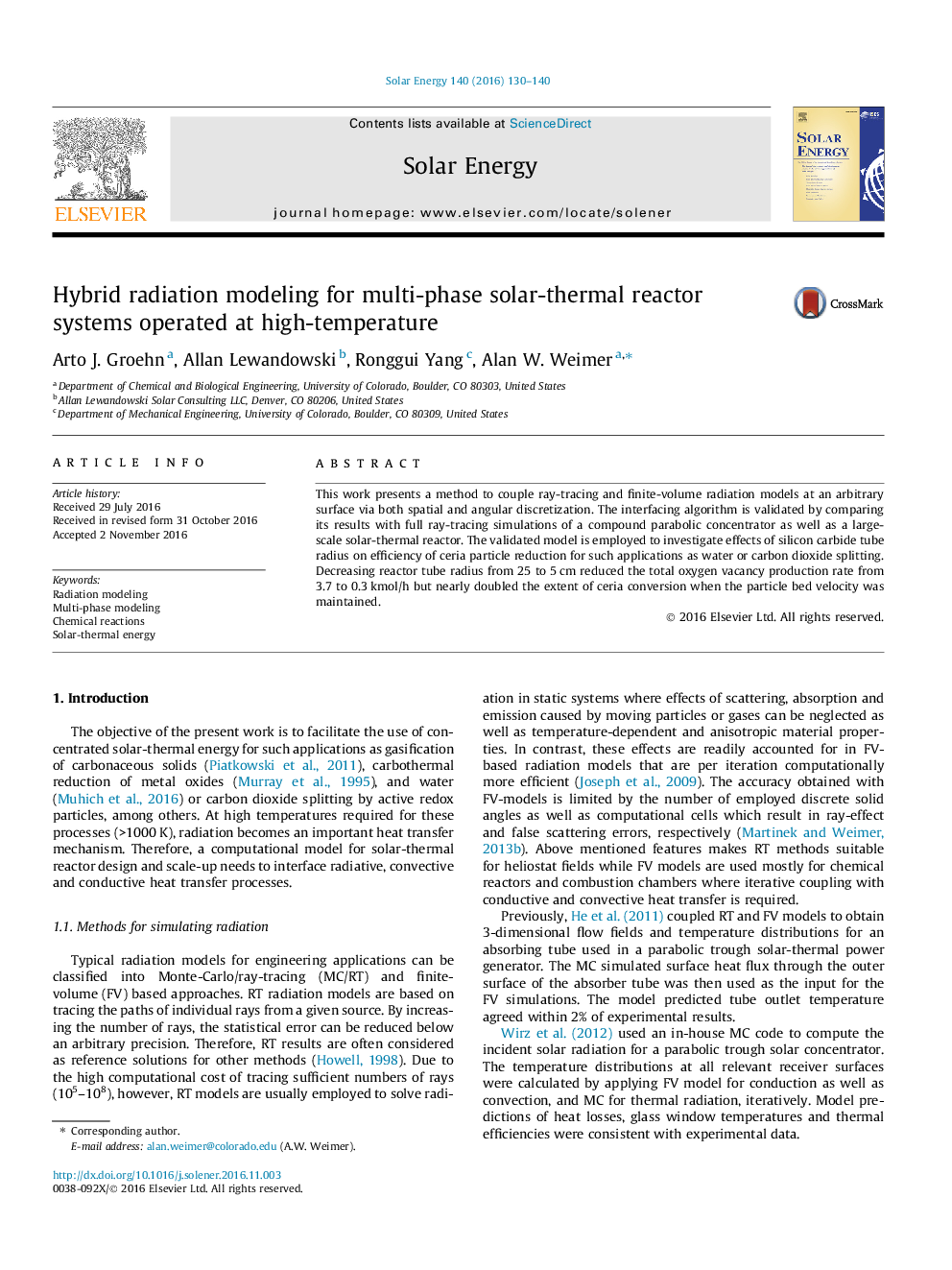| Article ID | Journal | Published Year | Pages | File Type |
|---|---|---|---|---|
| 5451027 | Solar Energy | 2016 | 11 Pages |
Abstract
This work presents a method to couple ray-tracing and finite-volume radiation models at an arbitrary surface via both spatial and angular discretization. The interfacing algorithm is validated by comparing its results with full ray-tracing simulations of a compound parabolic concentrator as well as a large-scale solar-thermal reactor. The validated model is employed to investigate effects of silicon carbide tube radius on efficiency of ceria particle reduction for such applications as water or carbon dioxide splitting. Decreasing reactor tube radius from 25 to 5Â cm reduced the total oxygen vacancy production rate from 3.7 to 0.3Â kmol/h but nearly doubled the extent of ceria conversion when the particle bed velocity was maintained.
Keywords
Related Topics
Physical Sciences and Engineering
Energy
Renewable Energy, Sustainability and the Environment
Authors
Arto J. Groehn, Allan Lewandowski, Ronggui Yang, Alan W. Weimer,
